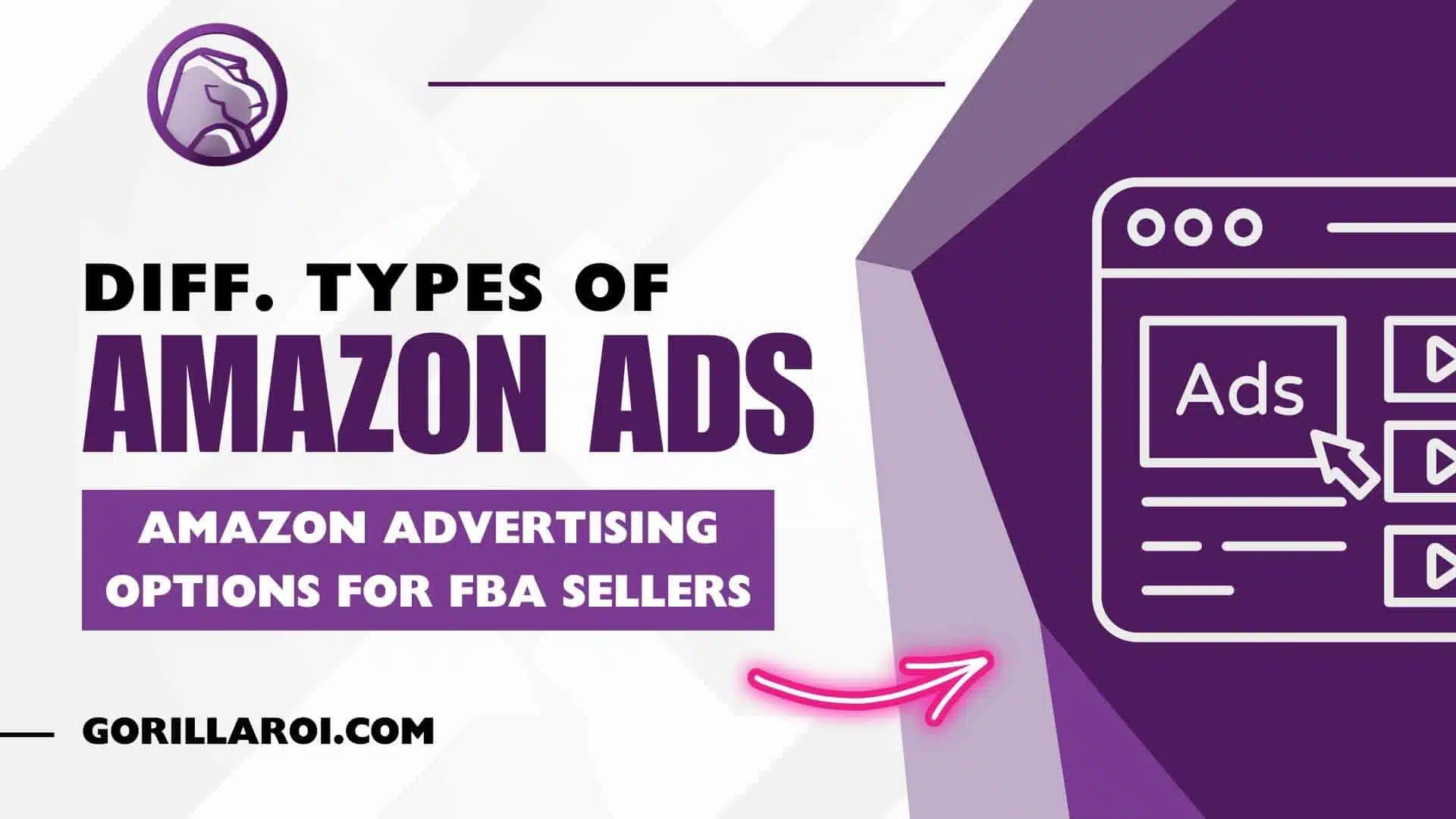What you’ll learn
What is the Amazon influencer program?
The Amazon Influencer Program is a marketing initiative offered by Amazon that enables social media influencers and content creators to partner with Amazon and promote products available on the Amazon platform to their followers.
It is distinct from the Amazon Associates Program, which is the traditional affiliate marketing program provided by Amazon.
Key features and aspects of the Amazon Influencer Program include:
- Social Media Focus: The Amazon Influencer Program is primarily designed for individuals who have a substantial and engaged following on social media platforms such as Instagram, YouTube, Twitter, and Facebook. It caters to influencers who create content on these platforms.
- Personalized Storefronts: Participants in the program, known as “Amazon Influencers,” can create personalized Amazon storefronts. These storefronts act as dedicated pages where influencers can curate and showcase a selection of products available on Amazon.
- Product Recommendations: Amazon Influencers use their storefronts to recommend and promote products to their followers. They can feature a wide range of products, including those that align with their niche or interests.
- Commissions: Influencers in the program can earn commissions on sales generated through their storefronts. Commissions are earned based on the sales volume attributed to their recommendations, and the rates may vary depending on the product category.
- Application and Approval: To become an Amazon Influencer, individuals must apply for the program and go through a review process by Amazon. Not all applicants are accepted, as Amazon assesses factors such as the influencer’s follower count, content quality, and niche relevance.
- Content Creation: Amazon Influencers typically create content on their social media platforms that includes product recommendations and product links and links to their Amazon storefront. This content can take various forms, including reviews, unboxings, tutorials, and lifestyle posts.
- Transparency: Amazon requires influencers to disclose their participation in the program and their relationship with Amazon, ensuring transparency with their followers and compliance with regulations.
- Performance Tracking: Amazon provides reporting tools that allow influencers to track the performance of their storefronts. This includes metrics such as clicks, conversions, and revenue generated through their recommendations.
- Exclusive Promotions: Influencers may collaborate with Amazon to offer exclusive promotions, discounts, or special deals to their followers through their storefronts. This can help drive sales and engagement.
The Amazon Influencer Program aims to leverage the reach and influence of content creators to drive product discovery and sales on the Amazon platform.
It benefits both influencers, who can monetize their content, and Amazon sellers, who gain access to a wider and more engaged audience.
What is the Amazon Influencer Program?

How can someone join the Amazon Influencer Program?
The Amazon Influencer Program is an extension designed to allow social media influencers and content creators to partner with Amazon and promote products available on the Amazon platform to their followers. Here’s how the program works:
- Application and Approval:
- Interested individuals who are active on social media platforms and who have Instagram account, YouTube, Twitter, and Facebook can apply to become Amazon Influencers.
- During the application process, Amazon evaluates various factors, including the influencer’s follower count, content quality, niche relevance, and engagement with their audience.
- Not all applicants are accepted, as Amazon is selective in choosing influencers who meet their criteria.
- Creating a Personalized Storefront:
- Once accepted into the program, Amazon Influencers can create their own personalized Amazon storefronts. These storefronts serve as dedicated pages where influencers can curate and showcase products available on Amazon.
- Influencers can organize and feature a selection of products that align with their niche, interests, and the preferences of their followers.
- Product Recommendations:
- Amazon Influencers use their storefronts to recommend and promote products to their social media followers. They can include a wide range of products, from fashion and beauty items to electronics, books, and more.
- Influencers often create content on their social media platforms that includes product recommendations and links to their Amazon storefront.
- Commissions on Sales:
- Amazon Influencers earn commissions on sales generated through their storefronts. These commissions are typically a percentage of the purchase price of the products sold.
- The commission rates may vary depending on the product category, and Amazon provides details on the rates within the program.
- Content Creation:
- Amazon Influencers create content on their social media platforms that promotes the products featured in their storefronts. This content can take various forms, including product reviews, unboxing videos, tutorials, and lifestyle posts.
- The content is designed to engage their followers and encourage them to explore the Amazon Influencer’s curated product selection.
- Transparency and Compliance:
- Amazon requires influencers to disclose their participation in the Amazon Influencer Program and their relationship with Amazon. This ensures transparency with their followers and compliance with regulations, such as FTC guidelines for sponsored content.
- Performance Tracking:
- Amazon provides reporting tools that allow influencers to track the performance of their storefronts. Influencers can monitor metrics such as clicks, conversions, and revenue generated through their recommendations.
- This data helps influencers assess the effectiveness of their promotions and make informed decisions on content and product selection.
- Exclusive Promotions:
- Amazon may collaborate with influencers to offer exclusive promotions, discounts, or special deals to their followers through their storefronts. These exclusive offers can create a sense of urgency and encourage their audience to make purchases.
In summary, the Amazon Influencer Program allows influencers to create personalized Amazon storefronts, recommend products to their followers, earn commissions on sales, and leverage their influence and reach to drive product discovery and sales on the Amazon platform.
It benefits both influencers, who can monetize their content, and Amazon sellers, who gain access to a more engaged and targeted audience.
What is the Difference Between Amazon Influencer Program or Amazon Associate or Affiliate Program

The Amazon Influencer Program, Amazon Associates Program (often referred to as Amazon Affiliate Program), and Amazon’s Affiliate Marketing program are distinct initiatives offered by Amazon.
Each serves different purposes and is tailored to different types of content creators and affiliates. Here are the key differences:
Amazon Influencer Program:
Target Audience:
The Amazon Influencer Program is primarily for social media influencers and content creators who have a substantial following on platforms like Instagram, YouTube, Twitter, and Facebook.
Objective:
The primary goal is for influencers to promote Amazon products to their followers by creating personalized Amazon storefronts. They earn commissions on sales generated through their storefronts.
Content Type:
Influencers create content such as product reviews, unboxing videos, tutorials, and lifestyle posts that feature Amazon products. They drive traffic to their Amazon storefronts.
Commission Structure:
Influencers earn commissions on sales through their storefronts, and the commission rates vary based on product categories.
Application Process:
Influencers must apply for acceptance into the program and are subject to review and approval by Amazon.
🗣️ Pro Tip: Influencers need to apply, be reviewed and accepted by Amazon.
Amazon Associates Program (Amazon Affiliate Program):
Target Audience:
The Amazon Associates Program is open to a broader range of individuals, including bloggers, website owners, YouTubers, and social media influencers.
Objective:
Participants in this program can promote Amazon products through affiliate links on their websites, blogs, social media, and other online channels. They earn commissions on sales driven by their affiliate links.
Content Type:
Associates create various types of content, such as product reviews, blog posts, how-to guides, and more, where they embed Amazon affiliate links.
Commission Structure:
Commissions are earned based on the sales generated through affiliate links, with varying rates depending on product categories.
Application Process:
Joining the Amazon Associates Program is relatively straightforward, and participants are generally approved as long as they meet Amazon’s terms of service and compliance guidelines.
Amazon Affiliate Marketing Program:
- The term “Amazon Affiliate Marketing” is a general reference to Amazon’s broader affiliate marketing ecosystem, which includes both the Amazon Influencer Program and the Amazon Associates Program.
- It encompasses all Amazon affiliate marketing initiatives, regardless of the specific program used, with the common goal of promoting Amazon products for commissions.
In summary, while all three programs involve promoting Amazon products for commissions, the key differences lie in their target audiences, content creation methods, and the platforms used for promotion.
The Amazon Influencer Program is designed for social media influencers, the Amazon Associates Program is open to a wider range of content creators, and “Amazon Affiliate Marketing” is a broad term that encompasses both programs within Amazon’s affiliate marketing ecosystem.
How Does the Amazon Affiliate Work?
The Amazon Associates Program, commonly referred to as the Amazon Affiliate Program, is a way for individuals, bloggers, website owners, and content creators to earn commissions by promoting products sold on Amazon.
Here’s how it works:
Sign Up for the Program:
To get started, you need to sign up for the Amazon Associates Program through the Amazon Associates website. This process is free and relatively straightforward.
Create Affiliate Links:
Once approved, you gain access to Amazon’s vast product catalog. You can create unique affiliate links for specific products or categories.
These affiliate links contain a special tracking code that identifies you as the referrer.
Promote Amazon Products:
You can promote Amazon products through various online channels, such as your website, blog, social media profiles, YouTube videos, email newsletters, and more.
When you want to recommend a product, you use your affiliate link within your content. This link directs users to the respective product page on Amazon.
User Clicks and Purchases:
When a user clicks on your affiliate link and is directed to Amazon, Amazon’s system tracks their activities.
If the user makes a purchase (of the linked product or any other product) during that session, you earn a commission on the sale.
Earn Commissions:
Commissions are typically a percentage of the purchase price of the product(s) bought by the user you referred. Amazon provides a commission structure with different rates for different product categories.
The more purchases made through your affiliate links, the higher your commissions.
Access Reporting and Analytics:
Amazon provides reporting and analytics tools within your affiliate account.
These tools allow you to track the performance of your affiliate links, including clicks, conversions, and earnings.
This data helps you assess the effectiveness of your promotions and optimize your affiliate marketing strategy.
Receive Payouts:
Amazon pays out your earned commissions on a monthly basis.
You can choose to receive payments through direct deposit, checks, or Amazon gift cards, depending on your preferences and the options available in your location.
Compliance with Amazon’s Policies:
It’s important to adhere to Amazon’s program policies and guidelines. Failure to comply with these rules can lead to account suspension or termination.
Additionally, it’s often recommended to disclose your affiliate relationship with Amazon when promoting products to ensure transparency with your audience.
Continuous Promotion and Optimization:
To maximize your earnings, you can continuously create and promote content, optimize your website or channels, and experiment with different strategies to attract more visitors and encourage them to make purchases through your affiliate links.
In summary, the Amazon Associates Program allows you to earn commissions by promoting Amazon products through your content and affiliate links.
It’s a popular way for content creators to monetize their online presence and earn passive income, based on the sales generated through their referrals.
How Can Amazon Sellers Use the Amazon Influencer or Affiliate Program to Boost Sales

An Amazon seller can leverage both the Amazon Influencer Program and the Amazon Associates (Affiliate) Program to boost sales and increase their reach.
If they get positive reviews for their Amazon store or products then that could earn money both for the seller and the influencer.
But more than that, here’s how they can use each program effectively:
Using the Amazon Influencer Program:
Identify Relevant Influencers:
- Sellers can identify social media influencers whose audiences align with their target market. Look for influencers who have a large number of followers or a strong social media following and create content related to your product niche.
Collaborate with Influencers:
- Reach out to selected influencers and propose a partnership. Offer incentives such as product samples or commissions on sales generated through their Amazon storefronts. Social media influencers, of course want to get paid for their services.
Assist with Storefront Setup:
- Help influencers set up their business account or influencer storefront or influencer page if needed. Ensure the storefronts are well-organized, with the seller’s products prominently featured. Ensure that the Amazon links or influencer link or storefront link are set in place.
Content Creation Guidance:
- Collaborate with influencers on content creation. Provide them with product information, images, and key selling points to incorporate into their content.
Promote Exclusive Offers:
- Encourage influencers to offer exclusive promotions, discounts, or bundles to their audience through their storefronts. This can create a sense of urgency and boost sales.
Monitor and Optimize:
- Use Amazon’s reporting tools to track the performance of influencer campaigns. Analyze metrics such as clicks, conversions, and revenue to assess the effectiveness of each partnership. Adjust strategies based on these insights.
Build Long-Term Relationships:
- Establish long-term partnerships with successful influencers. Consistent collaboration with influencers can lead to ongoing exposure and increased brand loyalty.
Using the Amazon Associates (Affiliate) Program:
Join the Amazon Associates Program:
- Amazon sellers can also become affiliates by joining the Amazon Associates Program. Once approved, they can generate affiliate links for their own products.
Promote Products on External Platforms:
- Share affiliate links on external platforms, such as blogs, social media, and email newsletters, to drive traffic to Amazon product listings.
Incorporate Affiliate Links into Content:
- Create high-quality content that features your products and includes affiliate links. This content could be in the form of blog posts, reviews, videos, or social media posts.
Utilize Paid Advertising:
- Use paid advertising, such as Google Ads or Facebook Ads, to drive targeted traffic to your Amazon listings through affiliate links. This can be particularly effective for seasonal promotions or product launches.
Optimize for SEO:
- Optimize your content and affiliate links for search engines to increase organic traffic. Keyword research and on-page SEO techniques can be beneficial.
Track and Analyze Performance:
- Monitor the performance of your affiliate links and campaigns using Amazon’s reporting tools. Track clicks, conversions, and earnings to assess the impact on sales.
Provide Value to Customers:
- Focus on providing value to your audience by offering helpful, informative, and engaging content. Customers are more likely to make purchases when they find your content valuable.
Compliance and Disclosure:
- Ensure compliance with Amazon’s affiliate program policies and disclose your affiliate relationship transparently to your audience.
By strategically utilizing both the Amazon Influencer Program and the Amazon Associates Program, sellers can tap into the reach and credibility of influencers while also promoting their products directly through their own affiliate efforts.
This multi-pronged approach can help boost sales and enhance brand visibility on the Amazon platform.
Strategy: How to Use Amazon Influencer Program to Boost Amazon Sales

Boosting Amazon sales using the Amazon Influencer Program requires a well-thought-out content strategy that leverages the reach and influence of content creators. Here’s a step-by-step plan to maximize your sales through this program:
1. Define Your Objectives:
- Start by setting clear and specific goals. Whether it’s increasing sales, expanding brand awareness, or launching a new product, your objectives will guide your influencer marketing strategy.
2. Identify Your Target Audience:
- Determine your ideal customer demographics, interests, and preferences. Understanding your audience will help you find influencers whose followers align with your target market.
3. Research and Select Influencers:
- Use Amazon’s influencer search tool, social media platforms, and influencer marketing platforms to identify potential influencers. Look for those with a relevant niche, a substantial and engaged following, and a history of producing high-quality content.
4. Establish a Budget:
- Determine how much you are willing to invest in influencer partnerships. Consider the fees for influencers, product samples, and any other associated costs.
5. Create an Attractive Offer:
- Craft a compelling pitch to approach influencers. Offer them a clear value proposition, such as commission-based incentives, free products, or exclusive promotions for their audience. Make it mutually beneficial.
6. Collaborate on Content Creation:
- Work closely with influencers to create engaging and authentic content. Encourage them to incorporate your products naturally into their content, whether it’s through reviews, tutorials, or creative product placements.
7. Optimize Amazon Storefronts:
- Assist influencers in setting up their Amazon storefronts. Ensure that the storefronts are visually appealing, user-friendly, and showcase your products effectively. Make use of the “List Ideas” feature to suggest products for inclusion.
8. Leverage Cross-Promotion:
- Promote the collaboration across your own marketing channels, such as your Amazon listings, social media, and email newsletters. This will help drive traffic to the influencer storefronts.
9. Monitor and Measure Performance:
- Use Amazon’s reporting tools to track the performance of your influencer campaigns. Pay attention to metrics like clicks, conversions, revenue, and return on investment (ROI).
10. Provide Feedback and Communicate:
- Maintain open communication with influencers throughout the campaign. Provide constructive feedback, answer their questions, and address any concerns promptly.
11. Encourage Engagement:
- Encourage influencers to engage with their audience by responding to comments, questions, and feedback related to your products. This interaction can build trust and boost conversions.
12. Nurture Long-Term Relationships:
- Focus on building lasting relationships with influencers. Successful partnerships can lead to ongoing collaborations and increased brand loyalty.
13. Adapt and Iterate:
- Continuously analyze the results of your influencer campaigns. Adjust your strategy based on what’s working and what isn’t. Experiment with different content creator and content types to optimize your approach.
14. Comply with FTC Guidelines:
- Ensure that influencers disclose their partnerships with you transparently to comply with FTC guidelines. This maintains trust with their audience and avoids potential legal issues.
15. Evaluate ROI:
- After the campaign, calculate the return on investment to determine the impact of your influencer marketing efforts on sales. Use this data to refine your future influencer strategies.
By following this comprehensive strategy, Amazon sellers can effectively utilize the Amazon Influencer Program to boost sales, increase brand exposure, and build a stronger presence on the platform.
Remember that influencer marketing is a long-term strategy that can yield substantial benefits when executed thoughtfully and strategically.
Final Words
In conclusion, the Amazon Influencer and Affiliate Programs are a dynamic and innovative marketing initiative offered by Amazon, tailored for the various social media presence and following of influencers and content creators.
It empowers these influencers to seamlessly connect with Amazon’s vast product catalog, curate personalized Amazon storefronts, and recommend products to their engaged followers.
This program not only benefits influencers by enabling them to monetize their online and social media presence but also provides Amazon sellers with a powerful tool to expand their reach and increase sales.
Through the Amazon Influencer Program, influencers can authentically promote products to their loyal audience, harnessing the trust and credibility they’ve built over time.
Meanwhile, sellers gain access to a highly targeted and receptive audience, resulting in increased brand exposure, customer clicks and, ultimately, improved sales performance.
In this digital age, where authenticity and trust are paramount, the Amazon Influencer Program bridges the gap between online creators and e-commerce, creating a win-win scenario for both influencers and sellers.
As a testament to the program’s effectiveness, it continues to play a pivotal role in shaping the future of influencer marketing and e-commerce on the Amazon platform.
Comments
Related Posts

Different Types of Amazon Ads: Amazon Advertising Options for FBA Sellers
There are different types of Amazon ads. Amazon offers several…

How Amazon Sellers Use the Amazon Wishlist to Boost Sales
Amazon is a vast and competitive marketplace where millions of…

Amazon Claims: A Comprehensive Guide for Sellers
Are you an Amazon seller looking to improve your understanding…
Ready to sync your Amazon data to Google Sheets?
Gorilla ROI is the easiest way to automatically sync your Amazon data to Google Sheets 24/7 to match your business needs. Uncover actionable insights to sell more and beat the competition.







Leave a Reply